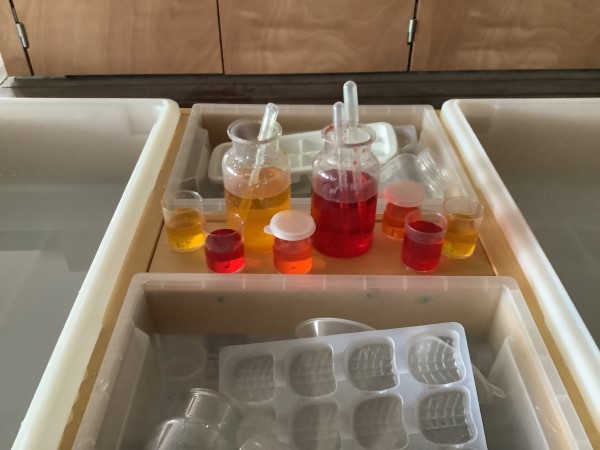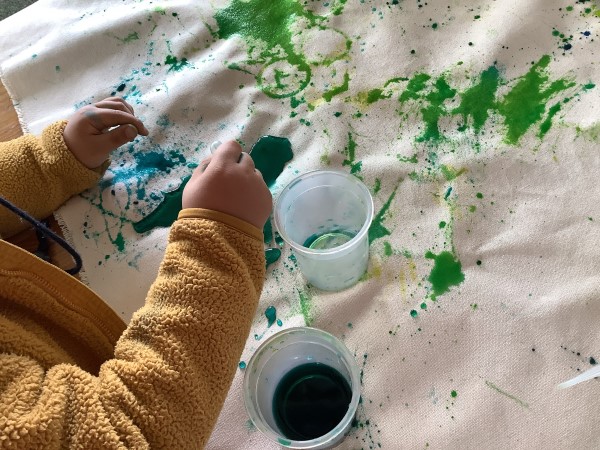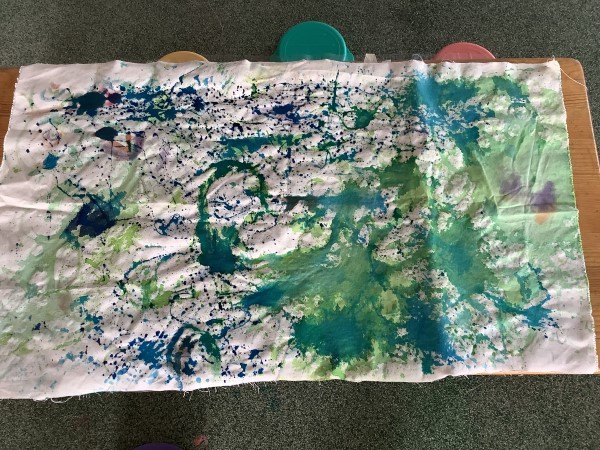At Gowrie Docklands Kinder, children’s fascination with water and colour has been transformed into a multi-sensory experience, highlighting the power of relationships between people, place and materials.
Early Childhood Teacher Amy Bartley says children’s affinity with water play can often be taken for granted and wanted to explore the learning possibilities by introducing a simple provocation, such as colour. “We set up a water trough, a range of transparent containers and coloured water,” Amy says. “For the children’s first encounter, we used only blue and yellow food colouring and carefully introduced it. At first, a few drops of blue into a small vessel filled with water allowed children to marvel at the movement of the dye.”
It’s like rain coming down. – Kelly
The experiment progressed over multiple sessions as children made choices about which colours to use and how much to add, captivated by the task of filling and pouring water from containers, and capturing the many shades of each colour.
“As these investigations continued, the teachers recognised the immense value of this experience, not only for deepening children’s conceptual understandings related to colour, but for the purpose of building children’s interdependence,” Amy says. “Participation in this provocation required children to negotiate materials and space, to communicate their needs and to follow a process and shared expectations. This provided us with wonderful insights relating to our ongoing teacher research around the importance of relationships with people, environments and materials, as well as children’s sense of belonging.”
This development of interpersonal skills prompted teachers to introduce a new provocation that would allow children to continue working together towards a shared goal.
A large piece of fabric and pipettes were incorporated, with the aim of creating a shared artwork. “We expected the coloured water would simply absorb into the fabric allowing children to experiment with colour mixing in a new way,” Amy says. “But, instead of absorbing the water, the fabric seemed to repel it and, instead, it sat in droplets on top of the fabric.”
This turn of events allowed the teachers and children to explore the possibilities of water and the reaction between the water and fabric.
The water is not staying down, the air is pushing it up! Varnika
Slowly, the children introduced new colours to the water and material, observing the emerging art piece.
In a further collaborative step, families were then invited to share aspects of their home language, relating to colour, which could be added to the artwork. “We saw this as a chance to honour the different home languages of our families and help them feel more connected and involved in our program,” Amy says.
“What we are now realising, is that what we thought was a project about water and colour, has been more about relationships and the interconnectedness of people, place, and materials. It has been about togetherness and the possibilities that are afforded when we work within a pedagogy of relationships.”



